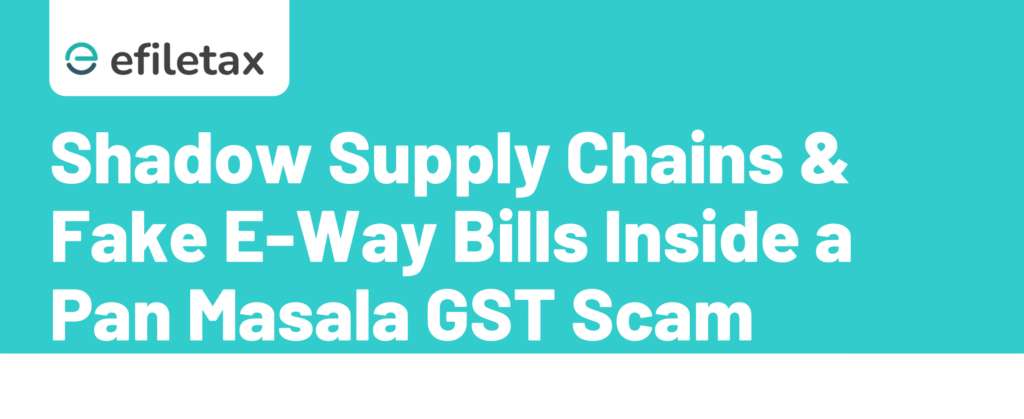
Intro Paragraph:
The shadow supply chain and E-way bill evasion tactics used by a pan masala manufacturer have once again exposed the loopholes in India’s GST framework. A DGGI investigation recently uncovered a multi-crore tax evasion operation that manipulated documentation, used dummy units, and bypassed mandatory E-way bills.
What Is a Shadow Supply Chain?
A shadow supply chain refers to the hidden movement of goods outside the official accounting and GST system. It is usually run parallel to the legitimate supply chain, enabling businesses to evade taxes, manipulate inventory, and avoid compliance.
E-Way Bill Mandate Under GST
- Applicable when movement of goods > ₹50,000
- Must be generated before transportation starts
- Valid across states with time-bound expiry
- Mandatory under Rule 138 of CGST Rules
- Linked to vehicle number, invoice, and GSTIN
Legal Reference: Rule 138 of the CGST Rules, 2017 mandates e-way bill generation for goods above threshold.
Case Highlight: Pan Masala Manufacturer Busted
Key Findings by DGGI:
| Modus Operandi | GST Violation |
|---|---|
| Used multiple dummy companies | Fake ITC claims, invoice fraud |
| Goods moved without E-way bills | Violated Rule 138 CGST Rules |
| Shadow logistics & cash transactions | Undisclosed turnover, GST evasion |
| Fake documents for raw materials | Suppressed actual production & supply |
- Estimated tax evasion: ₹100+ crore
- Departments involved: DGGI, local GST officers
- Status: Arrests made, assets attached under Section 83 of CGST Act
GST Law Angle: Key Sections Invoked
- Section 67 – Inspection, search, and seizure
- Section 132 – Punishment for tax evasion > ₹5 crore
- Section 83 – Provisional attachment of property
- Rule 138 – Non-generation of E-way bill
Expert View: What This Means for Other Businesses
“This case highlights how non-compliance with E-way bill rules can trigger full-blown investigations. Even minor supply chain gaps can now be traced using real-time data analytics,” says a former CBIC official.
Key Learning:
Businesses must reconcile GSTR-1, GSTR-3B, and E-way bill portal regularly. Any mismatch may flag your firm for audit or inspection.
Practical Tips to Avoid GST Trouble
- Always generate E-way bills before dispatch
- Train logistics and dispatch teams on documentation
- Reconcile monthly E-way bills with outward supply
- Avoid using shell vendors or fake ITC entries
- Keep trail of raw material vs. finished goods yield
Shadow Supply Chain: Red Flags for GST Officers
- Large turnover but low GST paid
- Disproportionate input vs. output
- No trail of goods movement despite dispatch invoices
- Mismatch between E-way bill data and GSTR filings
- Use of cash transactions for raw materials
Summary
Pan masala firms used a shadow supply chain and fake E-way bills to dodge GST. DGGI’s crackdown revealed ₹100+ crore tax evasion, fake invoices, and dummy units. A major case showing how GST rules are getting tighter with data surveillance.
FAQs
Q1. What is a shadow supply chain in GST?
A hidden or undeclared movement of goods, avoiding tax by bypassing compliance systems like E-way bills.
Q2. Is E-way bill mandatory for all goods?
Only for goods worth over ₹50,000 in value, with some exceptions under Rule 138.
Q3. What are the penalties for E-way bill violations?
Penalties under Section 129 and possible arrest under Section 132 if evasion > ₹5 crore.
Closing CTA
Facing a GST audit or compliance notice? Let Efiletax help you fix mismatches, file correctly, and stay risk-free. Contact us now to get expert support from our GST specialists.